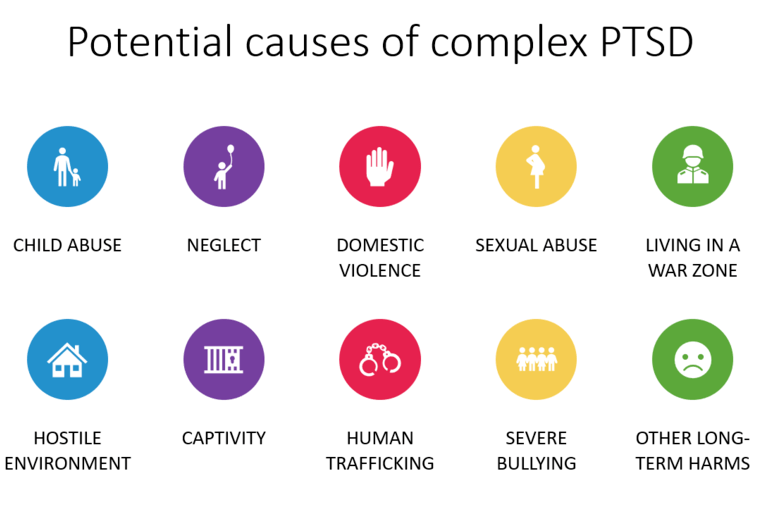What is the Difference Between Acute Stress Disorder and Post Traumatic Stress Disorder
Table of Contents
The key difference between acute stress disorder and post traumatic stress disorder is that acute stress disorder is a type of stress disorder that occurs immediately after a traumatic event, while post traumatic stress disorder is a type of stress disorder that occurs long term in the aftermath of trauma.
Stress disorder occurs when an event or a series of events exceeds the coping capacities of an individual. Coping capacity is the ability of humans to respond to and recover from the effects of stress. There are different forms of stress disorders, including acute stress disorder, post traumatic stress disorder, and complex trauma stress disorder.
CONTENTS
1. Overview and Key Difference
2. What is Acute Stress Disorder
3. What is Post Traumatic Stress Disorder
4. Similarities – Acute Stress Disorder and Post Traumatic Stress Disorder
5. Acute Stress Disorder vs Post Traumatic Stress Disorder in Tabular Form
6. Summary – Acute Stress Disorder vs Post Traumatic Stress Disorder
What is Acute Stress Disorder?
Acute stress disorder (ASD) is a form of stress disorder that occurs immediately after a traumatic event. It can cause a range of psychological symptoms. Acute stress disorder can lead to post traumatic stress disorder without recognizing it or without treating it. Experiencing, witnessing, or being confronted with one or more traumatic events can create acute stress disorder. The events cause intense fear, horror, or helplessness in these individuals. Traumatic events that can cause ASD include death, the threat of death to oneself or others, the threat of serious injury to oneself or others, and the threat to the physical integrity of oneself or others.
The symptoms of acute stress disorder include psychological symptoms such as anxiety, low mood, irritability, emotional ups and downs, poor sleep, poor concentration, wanting to be alone, recurrent dreams or flashbacks that can be intrusive and unpleasant, avoidance of anything that will trigger memories, reckless or aggressive behavior, feeling emotionally numb, and physical symptoms such as thumping heart, feeling sick, chest pain, headaches, tummy pains, and breathing difficulties. Moreover, this condition can be diagnosed through medical history, clinical presentation, physical examination, and questionnaires. Furthermore, the treatment options for acute stress disorder may include assisting in obtaining shelter, food, clothing, and locating family, psychiatric education to teach about the disorder, medications to relieve ASD such as anti-anxiety drugs, selective serotonin reuptake inhibitors (SSRIs), and antidepressants, cognitive behavioral therapy, exposure-based therapy, and hypnotherapy.
What is Post Traumatic Stress Disorder?
Post traumatic stress disorder (PSTD) is a type of stress disorder that occurs long term aftermath of trauma. It is a mental health condition triggered by a terrifying event, either experiencing it or witnessing it. Post traumatic stress disorder can be developed by seeing or learning about an event involving actual or threatened death, serious injury, or sexual violation. PSTD can probably be caused by a complex mix of stressful experiences, inherited mental health risks, inherited features of personality, and how the brain regulates chemicals and hormones released in response to stress.

The symptoms of this condition include intrusive memories such as distressing memories, upsetting dreams or nightmares, being startled or frightened, always being on guard for danger, self-destructive behavior, trouble sleeping, trouble concentrating, irritability, overwhelming guilt or shame, negative changes in thinking and mood such as hopelessness in the future, memory problems, difficulty maintaining close relationships, lack of interest in activities, difficulty experiencing positive emotions, emotionally numbness and avoidance such as avoiding thinking or talking about the traumatic event. Moreover, PSTD can be diagnosed through physical examinations, psychological evaluations, and using the criteria in the diagnostic and statistical manual of mental disorders (DSM-5). Furthermore, treatment options for PSTD may include psychotherapies such as cognitive therapy, exposure therapy, eye movement desensitization and reprocessing (EMDR), and medications such as antidepressants, anti-anxiety medications, and prazosin.
What are the Similarities Between Acute Stress Disorder and Post Traumatic Stress Disorder?
- Acute stress disorder and post traumatic stress disorder are two forms of stress disorders.
- Both forms are mental health conditions.
- They occur after traumatic events.
- Both forms may have similar symptoms and can be diagnosed through similar methods.
- They are treatable through psychotherapy and medications.
What is the Difference Between Acute Stress Disorder and Post Traumatic Stress Disorder?
Acute stress disorder is a type of stress disorder that occurs immediately after a traumatic event, while post traumatic stress disorder is a type of stress disorder that occurs long term aftermath of trauma. Thus, this is the key difference between acute stress disorder and post traumatic stress disorder. Furthermore, acute stress disorder is easily cured compared to post traumatic stress disorder.
The below infographic presents the differences between acute stress disorder and post traumatic stress disorder in tabular form for side by side comparison.
Summary – Acute Stress Disorder vs Post Traumatic Stress Disorder
Acute stress disorder and post traumatic stress disorder are two forms of stress disorders. Acute stress disorder occurs immediately after a traumatic event. On the other hand, post traumatic stress disorder occurs long term in the aftermath of trauma. So, this summarizes what is the difference between acute stress disorder and post traumatic stress disorder.
Reference:
1. Kivi, Rose. “Acute Stress Disorder: Causes, Symptoms, and Diagnosis.” Healthline, Healthline Media.
2. “Posttraumatic Stress Disorder – Symptoms and Causes with DSM-5 Criteria.” Trauma Dissociation.
Image Courtesy:
1. “Causes of Complex PTSD 1” By MissLunaRose12 – Own work (CC BY-SA 4.0) via Commons Wikimedia
ncG1vNJzZmivp6x7pbXFn5yrnZ6YsqOx07CcnqZemLyue9ahmK1lmah6tbTEZpuinpaav6a6wp5km52krLKmuoyamq6slWLAtb7ErKpmnJmovLOwxKtkmqaUYr2wv9Nmq6uZpaKutbXCZqqtqpWowG6wyKymq5yVp3w%3D